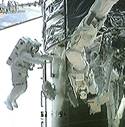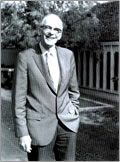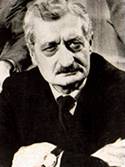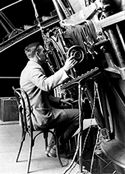 |
Servicing
Mission 3A (SM3A)
December 19, 1999: (STS-103) Launch of Shuttle Discovery.
November 13, 1999: Hubble placed in safe mode after the failure of a fourth gyroscope.
|
|

|
 |
|

|
 |
Servicing Mission 2 (SM2)
February 11, 1997: (STS-82) Launch of Shuttle Discovery.
- Space
Telescope Imaging Spectrograph (STIS) replaced
Faint Object Spectrometer (FOS).
- Near
Infrared Camera/Multi-Object Spectrometer (NICMOS) replaced
Goddard High Resolution Spectrograph (GHRS).
- Replacement of Fine Guidence Sensor #1 with modified spare with added capability for ground-controlled alignment corrections.
- Addition of an Optical Control Electronics Enhancement Kit (OCE-EK)
- Replacement of #1 Engineering Science Tape Recorders (ESTR) with digital Solid State Recorder (SSR) and replacement of #2 ESTR with a spare ESTR unit.
- Replace #1 of 4 Reaction Wheel Assemblies (RWA), with refurbished spare.
- Replacement of Data Interface Units (DIU) #2 with modified and upgraded spare unit.
- Replacement of #2 Solar Array Drive Electronics (SADE) with refurbished unit.
- Replacment of more durable covers on Magnetic Sensing System (MSS)
|
|
 |
 |
Servicing Mission 1 (SM1)
December 2, 1993: (STS-61)
Launch of Shuttle Endeavour.
- COSTAR,
Corrective Optics Space Telescope Axial Replacement installed, replacing
High Speed Photometer (HSP).
- WFPC 2 replaced Wide Field Planetary Camera 1 (WFPC).
- Solar Arrays replaced with Solar Arrays 2 (SA2)
- Replacement of #1 Solar Array Drive Electronics (SADE).
- Replace the #2 and #3 Rate Sensor Unit (two gyros each).
- Replacement of two Gyro Electronic Control Units which direct the RSUs.
- Replacement of eight electrical fuses.
- Installation of two new magnetometers.
- Installation of Goddard High Resolution Spectrograph Redundancy (GHRS) kit.
- Installation of two protective covers over original magnetometers.
|
|
 |
 |
Hubble Space Telescope (HST) Deployed
April 24, 1990:
(STS-31)
Launch of Shuttle Discovery.
April 25, 1990: Hubble Space
Telescope deployed into orbit with first-generation scientific instruments WFPC,
GHRS,
FOS,
FOC, and
HSP.
June 25, 1990:
Spherical aberration discovered in Hubble's primary mirror
COSTAR
Approved: the creation of a complex packaging of five
optical mirror pairs which would rectify the spherical
aberration in Hubble's primary mirror.
|
|


|
 |
Congress approves funding for The Hubble Space Telescope
NASA names its largest, most complex, and capable orbiting telescope
in honor of Edwin Hubble.
|
|
 |
 |
The LST - Large Space Telescope
Astrophysicist Lyman Spitzer gathered the support of other astronomers
for a "large orbital telescope".
In 1969, the National Academy of Sciences gave its approval
for the Large Space Telescope (LST) project, and the hearings
and feasibility studies continued.
|
|

|
 |
Conception of a space telescope
Famed rocket scientist Herman Oberth publishes an article speculating
on telescopes in orbit.
Space pioneer Hermann Oberth was considered by many to be the
most famous mentor of the late Dr. Wernher von Braun, the first
director of the NASA Marshall Space Flight Center in Huntsville,
Alabama.
|
|

|
 |
Edwin Hubble and the Hooker Telescope
2.5-meter (100-inch) Hooker Telescope begins operations at Mt.
Wilson Observatory in Pasadena, California.
With this telescope in the 1920's, astronomer Edwin Hubble measured
the distances and velocities of galaxies, work which led to
his discovery of the expanding Universe.
|
|

|
|